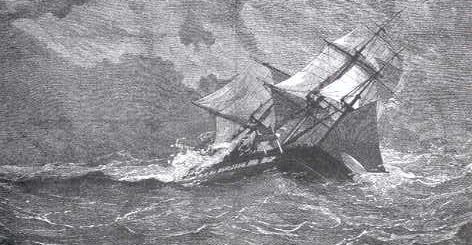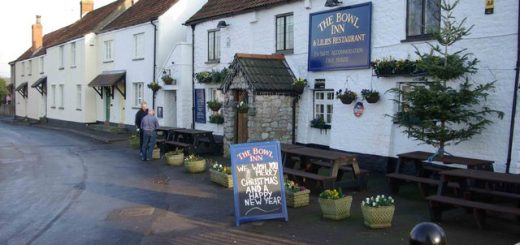Temple Newsam
Temple Newsam is a Grade I Jacobean House with a reputation of being haunted. The original house dates from about 1520 and was built on land seized by the Crown in from the Poor Fellow-Soldiers of Christ and of the Temple of Solomon (Knights Templars) following their suppression in 1307. In 1377 Sir Philip Darcy, 4th Lord Darcy received the estate through Royal decree. It stayed in the Darcy family until 1537, when it was again seized by the Crown after Sir Thomas Darcy was involved in the Pilgrimage of Grace and was summarily executed.
 The Earl and Countess of Lennox were gifted Newsam from King Henry VIII in 1544 and it here that Henry, Lord Darnley (7 December 1545 – 10 February 1567) was born the following year. Darnley would marry Mary Queen of Scots on 29 July 1565. He was murdered on 9 February 1567. In 1565 Newsam was seized by the Crown and remained so until 1603, King James I gave it to Ludovic, Duke of lennox.
The Earl and Countess of Lennox were gifted Newsam from King Henry VIII in 1544 and it here that Henry, Lord Darnley (7 December 1545 – 10 February 1567) was born the following year. Darnley would marry Mary Queen of Scots on 29 July 1565. He was murdered on 9 February 1567. In 1565 Newsam was seized by the Crown and remained so until 1603, King James I gave it to Ludovic, Duke of lennox.
Sir Arthur Ingram (Born 1562 – Died 24 August 1642) bought Newsam in 1622 and was responsible for extensively renovating the house. Newsam stayed in the family until 1922 when Edward Wood, 1st Earl Halifax sold it to Leeds Corporation. Today it is open to the public and owned by Leeds City Council.
The Blue Lady’s is reputed to be a young teenager named Mary Ingram (Born 1638 – Died 1652), the daughter of Sir Thomas Ingram (Born 1613 – Died 13 February 1671), Member of Parliament, Chancellor of the Duchy of Lancaster and Frances Belasye (Born 1610 – Died 1680). Her portrait hangs in the Gothick Room. In an article entitled ‘Ghostly tales from Temple Newsam’ which appeared the Yorkshire Evening Post (11/02/2019), Neil Hudson gives the following account of the Blue Lady’s story. ‘Mary Ingram lived at the house in the late 17th Century and at the age of 14 was returning from a party when her carriage was ambushed near Garforth by a gang of highwaymen. They stole all Mary’s possessions, including her favourite necklace, a Christening present from her grandfather, Sir Arthur*, leaving young Mary utterly distraught. Arriving back at Temple Newsam on foot, Mary is said to have collapsed, waking up the next day with no memory of the theft and convinced that she had lost the precious necklace. Searching throughout the house, she was said to have done everything from unpicking cushions to lifting up floorboards in an effort to be reunited with the lost trinket, becoming so obsessed with finding it that she refused to eat or drink. Sadly, just two weeks later, she died but for centuries, her unhappy spirit is said to have continued to wander the house, forever looking for her missing jewellery.’
A variant on the story has the robbery causing such shock to Mary that she becomes obsessed with hiding her valuables throughout the house. This behaviour was maintained until her death and the story goes that the Blue Lady is still looking for her hidden jewellery.
Another variation of the story describes the stolen jewellery as a pearl necklace.
Neil Hudson’s article states that ‘reports have been made of strange creaking noises, sudden cold blasts of air and odd rippling movements in the carpet.’ These have been attributed to the Blue Lady. In George Parkinson’s article published in the Newsletter of the Allerton Bywater Parish Council. ‘Allerton Anthology No 68 (2011)’, he describes the Blue Lady as an appartion. ‘When sighted she is seen wearing a costume of Blue material and a long flowing scarf. In 1926 a Gentleman interested in psychic matters visited the house and although he knew nothing about the blue lady, he gave a detailed description of a lady dressed in a blue costume standing by a doorway in the house. An interesting feature of the blue lady mentioned by all who have seen her is a scar near the right eye. This is not mentioned in any records and is not visible on her portrait, although slight the scar is quite noticeable according to those who have seen her.’
The second ghost is thought to be that of a girl named Phoebe. According to a The Yorkshire Post article date 30 October 2017, ‘Phoebe was a young maid who was working at the great house in 1704, the night of a party to celebrate the victory of the Duke of Marlborough at the Battle of Blenheim. Phoebe returned from taking a drink upstairs via the back staircase, and was stopped by estate worker William Collinson, who was determined to steal a kiss. He squeezed the girl so hard that he suffocated her then threw her body down a well. The law caught up with him and he was tried and hanged. Both ghost hunters and some ordinary visitors to the house say they have heard Phoebe’s screams.’
Ten years earlier in 2007, The Yorkshire Post gave a slightly different story concerning Phoebe in an article by Andrew Robinson entitled ‘Tour reveals dark side of life in stately home’. ‘Visitors will also hear the story of the murder of 16-year-old nursemaid Phoebe Gray one hot summer night in 1704. She was killed by fellow servant William Collinson following a party to celebrate the English victory over the French in the Battle of Blenheim. It is said that a drunken Collinson strangled the girl in one of the dark passageways. He dragged her body into the cellars and threw it in a well, then ran off into the night. He was tried and sentenced to be hanged. Ever since, the ghost of Phoebe is said to haunt the back stairs and the passages.’
George Parkinson’s article again gives another variation of the story and adds Collinson as another potential ghost. ‘The apparition of the serving man is believed to be connected with a murder in the house which took place in the 18th century. The servant William Collinson seems to have been in love with a serving maid Phoebe Gray. On the night of the murder a large bonfire was burning in the grounds to celebrate the victory of the Duke of Marlborough at the Battle of Blenheim in1704. Around the fire were assembled a great number of people family, friends, estate workers and visitors, all partaking of the free food, wine and beer. Phoebe was confined to bed owing to some disposition which we are not clear about. William Collinson suddenly made an appearance and what passed between them is unknown, but he strangled her and threw her body down a well in the house where it remained for several days before being discovered fully clothed at the bottom of the well. Suspicion fell on William who had been observed by another servant in the vicinity of the girl’s bedroom on the night of the murder. Eventually he confessed to murdering her and was hanged on the gallows at York. Visitors who have stayed at the house and have slept in the next room to where the murder took place have described curious tapping’s as though the body of a woman wearing shoes was being dragged backwards across the floor, this was always accompanied by the sound of shuffling footsteps.’
Those are the two ghosts that the press usually mention regarding Temple Newsam. George Parkinson in his article briefly describes two more though. ‘The ghost of the White Lady is that of Lady Jane Dudley a ward of the Countess of Lennox. She was in love with Lord Darnley who married Mary Queen of Scots, when she heard of the betrothal she hanged herself with her girdle. When the ghost has been sighted she has been wearing a white robe, a lace cap and a small ruff, she is said to walk in the part of the house built in the 16th century. She was seen frequently in the 18th century, once in 1735 she startled a servant so severely that it took several hours before the convulsions which had overtook her ceased and she could describe what she saw and it coincided with a description given by someone 140 years previously.’
‘The fourth apparition sometimes mentioned is that of a Monk dressed in a brown robe and a cowl, but nothing is known about this one. It is thought it could be something to do when Temple Newsam belonged to the Knights of St John’.
George went to say that ‘A few years ago I spoke to one of the custodians of at the mansion, who told me he had never seen anything, but along with others who worked there all had heard sounds mostly of footsteps that could not be explained.’
*Sir Arthur Ingram I (Born 1562 – Died 24 August 1642) was Mary’s paternal grandfather and he died when she was very young.




I have visited the house a few times, it’s stunning. Never actually been inside though which is a shame but there’s quite a few stories from people who claim to have seen ghosts there too. It seems quite active but I’m not sure if many people get the chance to investigate.